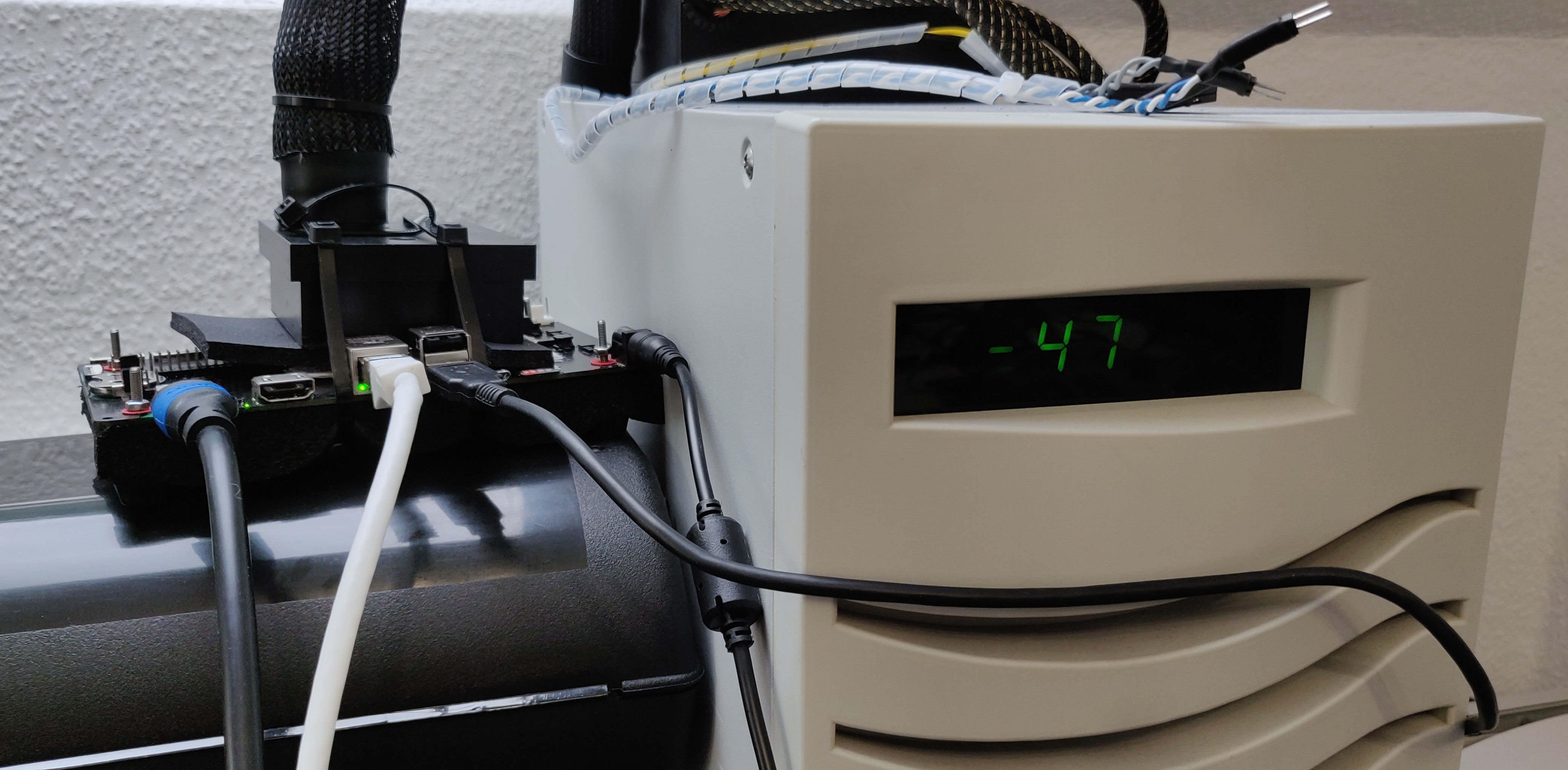Geekbench 5 Record
Table of contents
Geekbench 5 for ARM
Recently I stumbled across the Geekbench benchmark and that it has support for ARM-based computers.
Yeah, I’m late to the party, this is a year old news.1
Nevertheless I wanted to try the benchmark and see how the Raspberry Pis perform.
Luckily more than 1,900 others had the same idea before me2, so I could compare my results against enough other ones.
Getting the benchmark to run is pretty straight forward:
- Download the latest version:
wget https://cdn.geekbench.com/Geekbench-5.5.1-LinuxARMPreview.tar.gz - Extract the archive:
tar -xvzf Geekbench-5.5.1-LinuxARMPreview.tar.gz - Navigate to the binaries:
cd Geekbench-5.5.1-LinuxARMPreview/ - Execute the benchmark:
./geekbench5
After the run you get two links. One for the result itself and one to claim this result to your account.
The Setup
I started the benchmark with some runs at stock and slighty overclocked clocks on my Raspberry Pi Compute Module 4.
In order to reach 2,500 MHz I needed some extra cooling, so mounted my Prometeia SSPC on the CM4.
As you can see, this time I spend some time to prepare for sub-zero temperatures.
I’ll do a short article about the steps to prepare.
Record
With 2,500 MHz the current record for a Raspberry Pi based board of 352 /908 pts.3 (Single/Multi-Core Score) was easily achievable, because there were no other results at this clock speed.
I also tested, if there is a difference between running Raspberry Pi OS 32 vs. 64-bit and Buster vs. Bullseye.4 5 6
| Operating System | Architecture | Single-Core | Multi-Core | Difference |
|---|---|---|---|---|
| Buster 10.12 | 32-bit | 281 | 764 | 80 / 84 % |
| Buster 10.12 | 64-bit | 347 | 893 | 99 / 98 % |
| Bullseye 11.3 | 32-bit | 283 | 781 | 80 / 86 % |
| Bullseye 11.3 | 64-bit | 352 | 908 | 100 / 100 % |
The small differences between Buster and Bullseye are within the measurement tolerances, but as you can see, 32-bit is significally slower.
The clock speed isn’t correct either. Instead of 2.50 GHz Geekbench read out 2.69 GHz.
I’d love to go higher than 2.50 GHz, but as we all know, the firmware-lock is still there.
Tip: Unfortunatelly the Geekbench 5 browser doesn’t have a sorting feature (Don’t ask me why, the v4 one has…), but you can manually add the sorting-strings to the URL:
Quick HWBOT Prime Benchmark
Since I tested different OS-configurations, I also tested them with the HWBOT Prime benchmark:
| Operating System | Architecture | Score |
|---|---|---|
| Buster 10.12 | 32-bit | 4,793.06 |
| Buster 10.12 | 64-bit | 4,712.96 |
| Bullseye 11.3 | 32-bit | 4,792.66 |
| Bullseye 11.3 | 64-bit | 4,759.50 |
For those who ask, there is almost no difference between the current supported OS-configurations.
The 1-2 % deviations are within the measurement tolerances.
Final words
This whole benchmark session took me about 5 hours in total. Quite alot time.
But for reasons of transparency, I needed some time to figure out, why the Multi-Core benchmark always failed at a specific test.
If you want to use the CM4 with 4 GB of RAM, you have to install it. Do not take the 1 GB one. Yeah…time for a facepalm.
